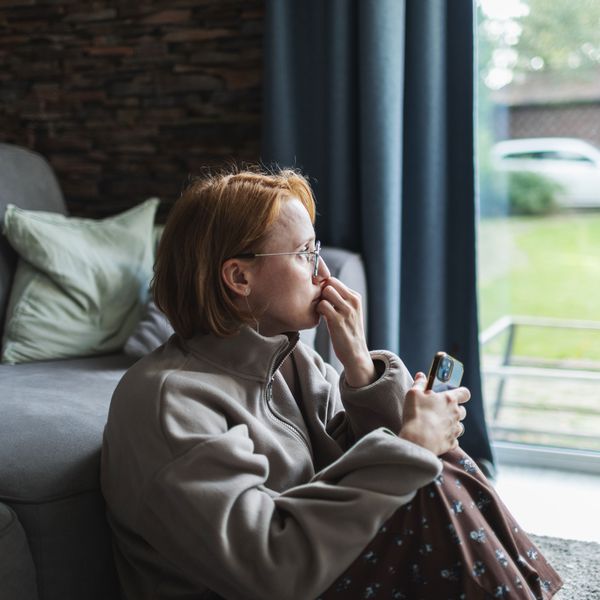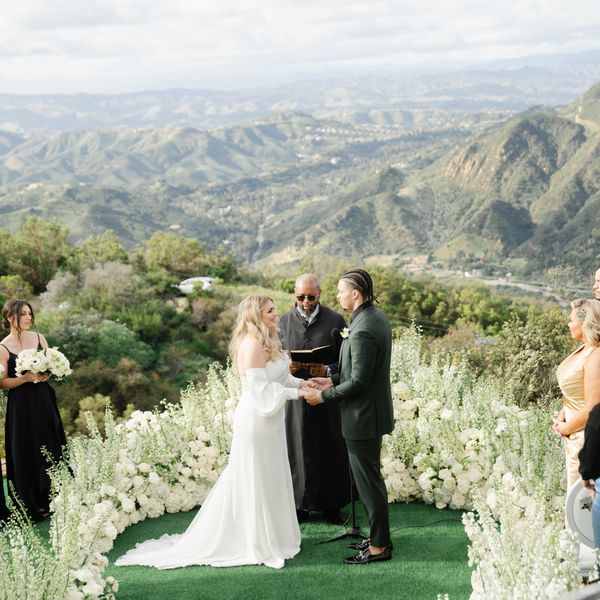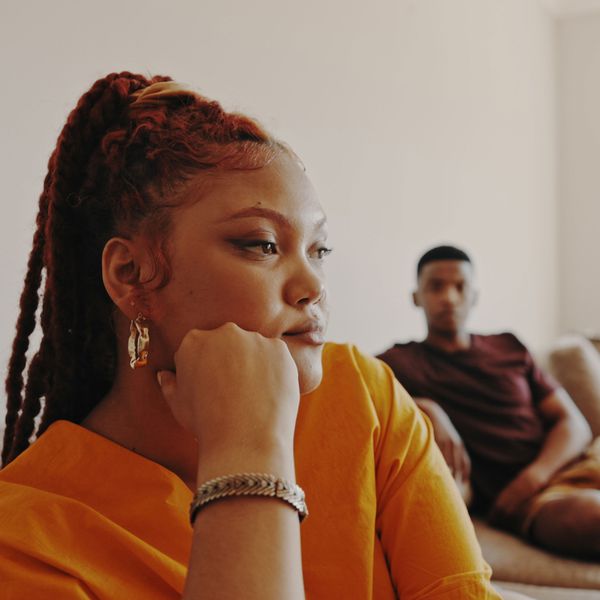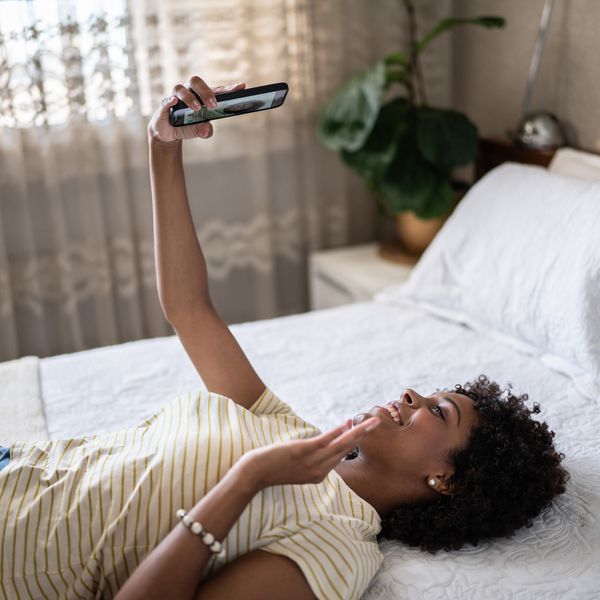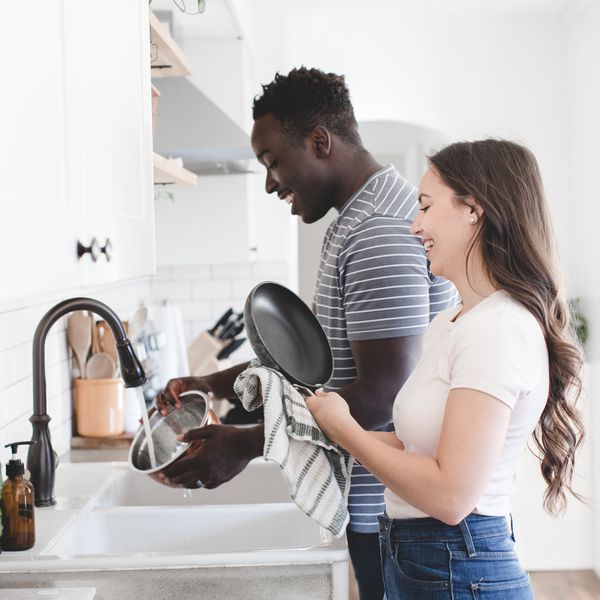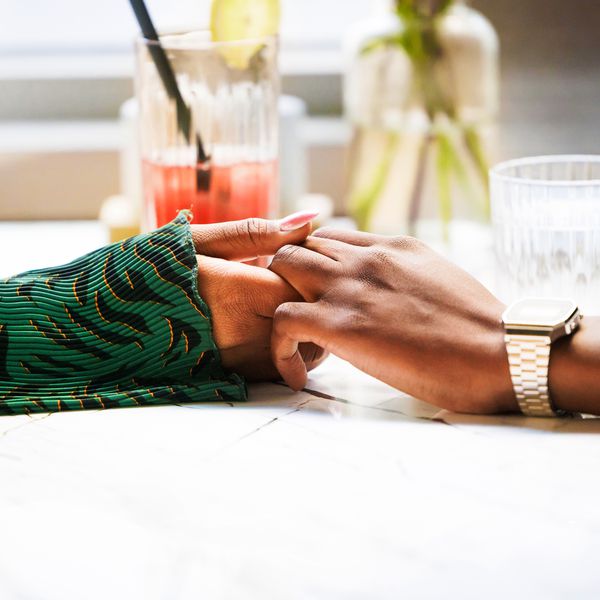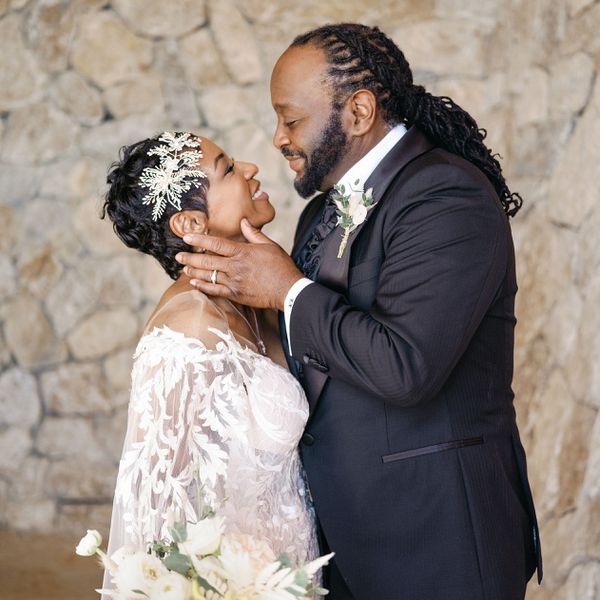
Catherine Falls Commercial / Getty Images
Countless great love stories have started out with two strangers locking eyes across a crowded room—and for good reason: Making eye contact is one of the simplest, most straightforward ways humans signal their interest in each other. “Since time immemorial, humans have used eye contact to communicate,” says dating and relationship coach Damona Hoffman. Engaging, alluring eye contact shows attraction and boosts sexual tension while, says Hoffman, “creepy eye contact triggers the body's fight, flight, or freeze responses.”
Meet the Expert
- Damona Hoffman is a dating expert, relationship coach, and the host and producer of The Dates & Mates Podcast.
- Sara Vargas, LMFT, CST, is a psychotherapist, the founder of The Center for Relational Wellness, and an adjunct professor in the Sex Therapy Certificate Program at Adler University.
- Amie Leadingham is a master certified relationship coach, accredited by the Relationship Coaching Institute.
Sara Vargas, LMFT, CST, also understands the power of fostering a connection through deliberate eye contact. “When two people look into each other's eyes, it can feel disarming and intimate,” she says. “Often people shy away from direct eye contact because it can feel uncomfortable or too close, but when this happens, it signals interest or attraction.”
With the rise in virtual dates, video calls, and texting, it can be easy to feel like you’ve lost confidence in your eye contact skills. “It's only in very recent years as we have all been so tied to our phones that looking at your screen feels more comfortable than looking at another person, but deep down we are all craving human connection,” says Hoffman. The triangle method—a non-verbal flirting technique based on intentional, thoughtful eye contact—can help. “That is why the triangle method is so effective,” says Hoffman. “It gives singles a framework for how to replicate appropriate eye contact.”
What Is the Triangle Method?
Imagine your conversation partner’s face as an inverted triangle, with their eyes at the top and their mouth at the bottom; then picture moving your eyes slowly and delicately along this path. “The triangle method is a flirtation technique with a subtle eye movement pattern where you look at one of your conversation partner's eyes, then the other eye, and glance down at their mouth and back to the first eye, creating a triangle shape,” says relationship coach Amie Leadingham. The whole process should be slow and intentional, but not dramatic; it should take about two seconds, total.
The method relies on the innate sense of connection that stems from eye contact. “By gently moving your gaze between their eyes and mouth, you're creating interest without making them uncomfortable,” says Leadingham. “It's a softer, more natural way to maintain attention compared to just staring into their eyes, which can feel too intense. This gentle back-and-forth helps you appear genuinely engaged in what they're saying while keeping the interaction comfortable and flowing; think of it as finding that sweet spot between showing interest and maintaining a relaxed, easy connection.”
The triangle gaze is also a time-tested method for indicating attraction, though the official history is a little hazy. “As far as I know, it's unclear who actually coined the term and identified the technique first,” says Hoffman. “Some people reference Marilyn Monroe as the inspiration for it—but the true origin of the term is unknown, as far as I can tell.”
Does the Triangle Method Work?
The triangle method is simple and effective, say the experts, since it relies on one of our most basic human forms of connection. “Eye contact is one of the key elements of flirting,” says Hoffman. “How you look at someone is key to escalating the sexual tension.” Shifting your gaze between the eyes and mouth is a nuanced—but significant—way to imply your attraction. “It's clear enough to show them you're interested, as you put attention on their eyes, then [suggests] that you might be thinking about kissing their mouth, but then, before they know it, back to the eyes,” says Hoffman. “It's also subtle enough that if they react negatively, you can pivot and save face.”
Intentional eye contact with a partner also triggers the release of potent chemicals in your brain—a direct and immediate way to form a deeper connection. “Oxytocin, sometimes called the love hormone, creates those warm, trusting feelings we experience during intimate moments,” says Leadingham. “Along with dopamine, which makes us feel rewarded and pleasantly excited, these natural chemicals work together to create that special spark we feel during deep eye contact.”
5 Tips for Using the Triangle Flirting Method in Your Relationship
Whether you're employing the tactic on your longtime partner or spouse or trying it out on a first date, the triangle flirting method can be a great way to connect. The key, though, is to not go overboard. Try these five tips for ensuring you strike the right balance.
Be Subtle
There’s a fine line between attractive eye contact and a creepy glare; it’s critical that you stay on the right side of it when implementing the triangle method. “It's important not to stare too long, and don't do it too often!” says Vargas. “A couple of times throughout the conversation should make the message clear, without coming off as more intense than you intend. The gaze as a whole should be fluid, only be a few seconds, and include a gentle smile.”
Part of the method’s power comes from its restraint, so implement it conservatively. “This natural gaze pattern subtly signals interest and creates intimacy, as it's how we instinctively look at someone we're drawn to,” says Leadingham. “Rather than maintaining an unwavering stare, this gentle visual dance can make the other person feel genuinely noticed and appreciated, fostering a deeper connection.”
Show Genuine Interest
The best flirting techniques don’t look—or feel—like techniques; they present themselves as natural, instinctive behaviors that express your emotions. “During normal conversation with someone you're attracted to, your eyes will naturally want to move between their features, so start with comfortable eye contact and let your gaze drift occasionally to their mouth when they're speaking or smiling,” says Leadingham. “Keep these movements slow and gentle, since quick darting looks can seem nervous or unnatural. The key is to let it flow from genuine interest rather than treating it like a mechanical technique.”
Letting your natural enthusiasm for your partner show through will also help you forge a connection. “The more you engage in conversation by being curious, the more likely you'll draw the other person in,” says Vargas. “It's exciting to notice when someone wants to get to know you. Of course, remember to enjoy yourself—fun and laughter can be flirtatious and erotic all on their own!”
Pair It With Other Techniques
Between triangle gazes, add other flirting techniques. “Though this method can be helpful, it's not the only thing to rely on; smiling and a light touch on the shoulder can also signal attraction,” says Vargas. Leadingham also suggests an eye contact method called “The Gaze:” “This is where you maintain eye contact for just two to three seconds longer than a typical casual glance, which is usually one to two seconds,” she says. “Then you look back again for two to three seconds. This sends signals of interest without becoming uncomfortable for the other party.”
Be Relaxed and Authentic
If you’re truly connecting with someone, you should be listening and responding to what they’re saying—not tracking how many seconds you’ve looked at their eyes or mouth. “Most importantly, stay focused on the actual conversation rather than overthinking your eye movements, which can make things feel forced,” says Leadingham. “Think of it like dancing: Once you understand the basic steps, focus more on feeling the natural flow and connecting with your partner rather than counting every move.”
Be Brave
Hoffman finds that some flirters shy away from the triangle method for one reason: It’s new—so they’re nervous. “Many people don't use the power of the triangle method because they're afraid of it,” she says. “They're afraid of trying new flirting techniques because they don't want to look like they're trying too hard or they don't want to get shot down, but you have to take a risk to get a reward—especially in dating. I recommend that my clients step into their discomfort because the worst thing that will happen is they won't be interested, and the best thing that could happen is an amazing love. If that's not worth a risk, I don't know what is.

